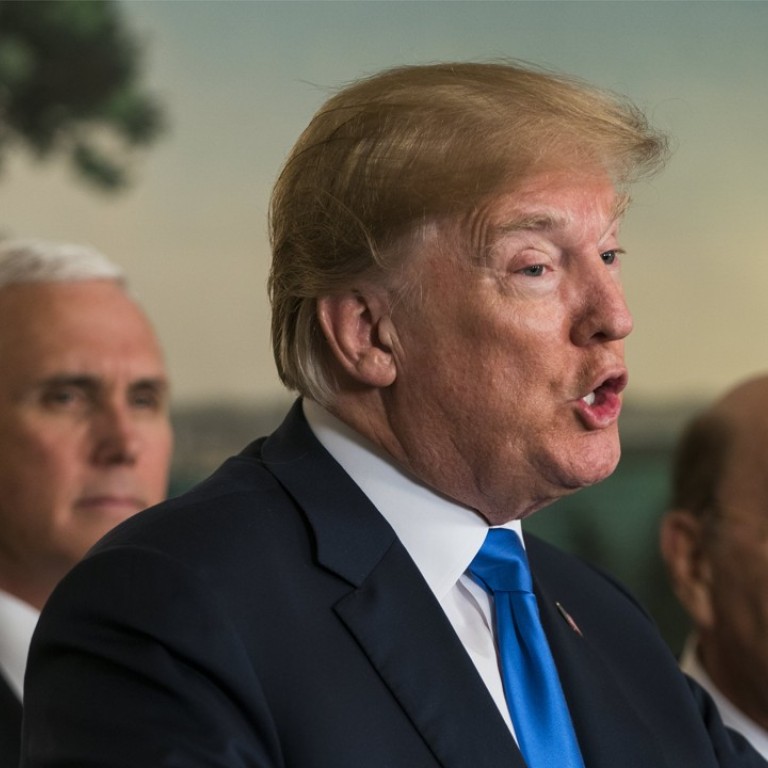
Donald Trump mulls extra US$100 billion punitive tariffs on China imports
White House announcement comes two days after the US Trade Representative’s office said it would slap US$50 billion tariffs on China
US President Donald Trump said his administration might levy punitive tariffs on an additional US$100 billion worth of Chinese imports, raising the stakes in tit-for-tat trade action Washington and Beijing are aiming at each other.
The White House announcement came two days after the US Trade Representative’s office said that tariffs will be slapped on some US$50 billion worth of imports from the country. In response to USTR’s move and earlier ones targeting aluminium and steel imports, China placed punitive tariffs on an equivalent amount of imports of US products including soybeans, pork and aircraft.
“In light of China’s unfair retaliation, I have instructed the USTR to consider whether US$100 billion of additional tariffs would be appropriate under section 301 and, if so, to identify the products upon which to impose such tariffs,” Trump said in a White House statement.
“I have also instructed the Secretary of Agriculture, with the support of other members of my Cabinet, to use his broad authority to implement a plan to protect our farmers and agricultural interests.”
I have great respect for the President of China, President Xi [Jinping] … but he’s representing China, and I’m representing the United States of America
Trump has staked his reputation on a strong economy and job creation, metrics that have kept his support levels stable amid multiple investigations into connections between some of his former campaign aides and alleged interference by Russia in the election that brought Trump to power.
Shielding the US agricultural sector from damage in the escalating trade war with China is crucial for the US leader, who drew substantial support from farming states for his winning presidential campaign of 2016.
Iowa, for example, exported US$1.8 billion worth of oilseeds and grains to China, the state’s second largest foreign market after Canada, in 2016, according to data compiled by the US-China Business Council.
China was Nebraska’s top international export destination, with Chinese buyers taking in more than US$1 billion of agricultural products from the rural state.
Trump won both states in the presidential election. Voters there and in many other Midwestern agricultural US states have a lot riding on soybean sales to China.
“Exports are extremely critical to the financial well-being of our producers,” National Pork Producers Council CEO Neil Dierks said earlier this week, after China announced a 25 per cent tariff on US pork imports.
China is the US’s third-largest foreign market for pork, accounting for more than $1 billion in sales last year, according to the industry group.
“We recognise that the US and China are negotiating, and we are hopeful that the 25 per cent tariffs on US pork will be short-lived,” Dierks said.
At US$14 billion, soybeans accounted for about 9.2 per cent of the US’s total 2017 exports to China, and nearly three quarters of the value of its agricultural product exports to the Asian country.
Speaking at an event in West Virginia hours before the announcement about possible additional tariffs on Chinese goods, Trump emphasised his commitment to the trade fight with Beijing.
“You probably saw that, for many years, no President wanted to go against China, economically. And we’re going to do it. We had a trade deficit of almost US$500 billion last year with China,” Trump said.
“I have great respect for the President of China, President Xi [Jinping]. He’s a friend of mine, and I’m a friend of his, and I like him a lot, but he’s representing China, and I’m representing the United States of America.”
The US trade deficit with China rose to a record $376 billion in 2017, according to US government data.

